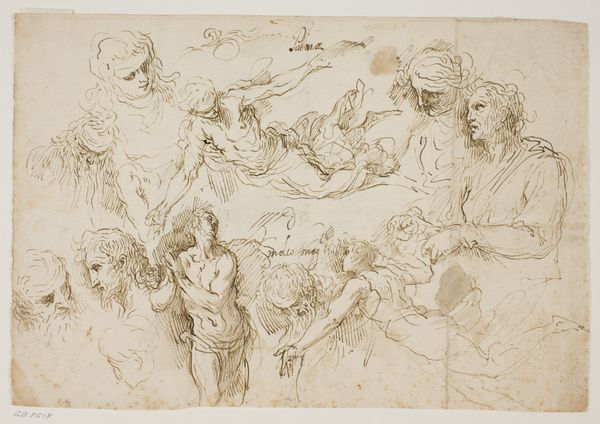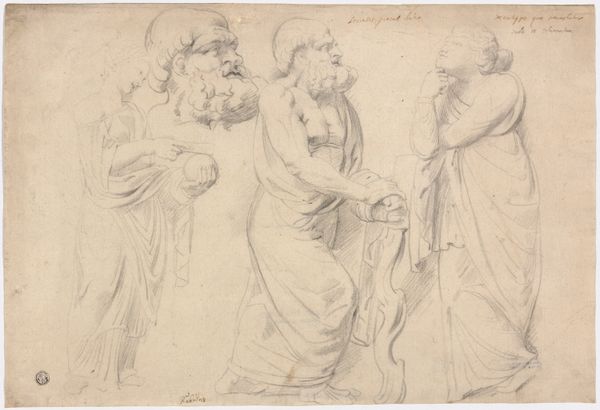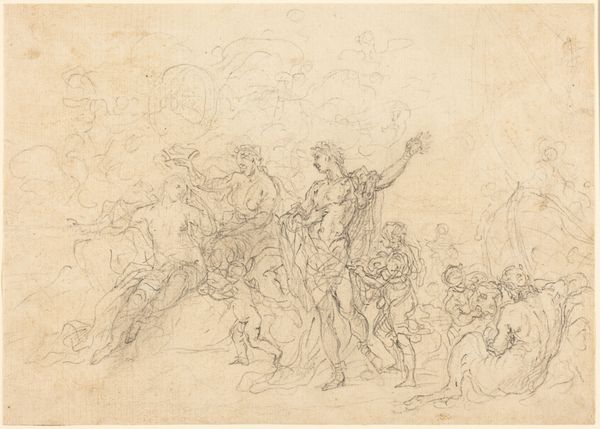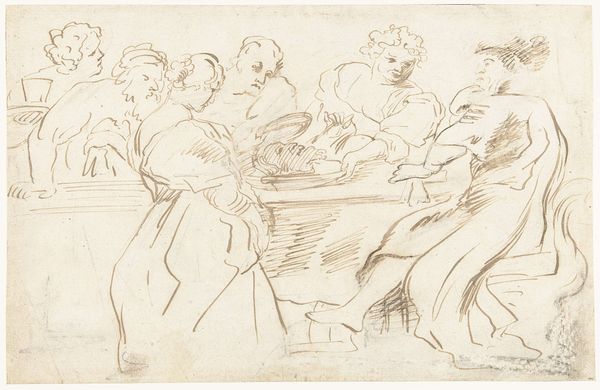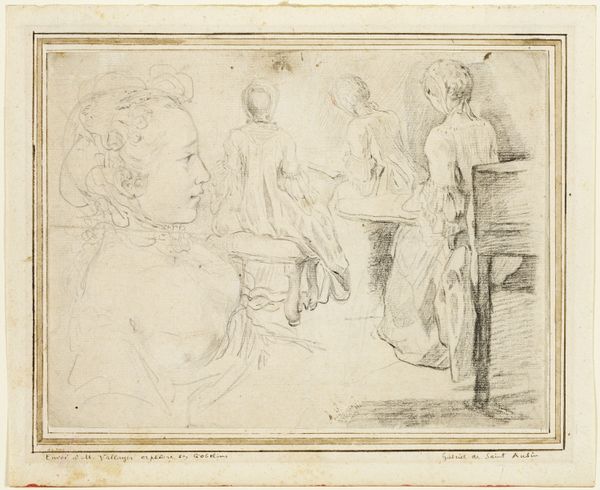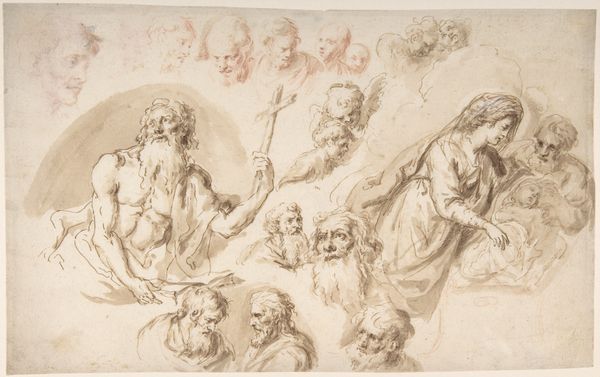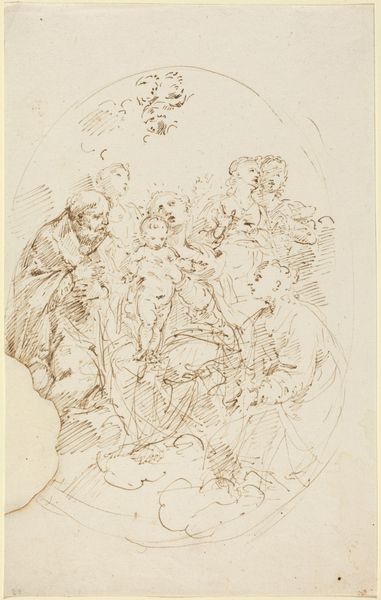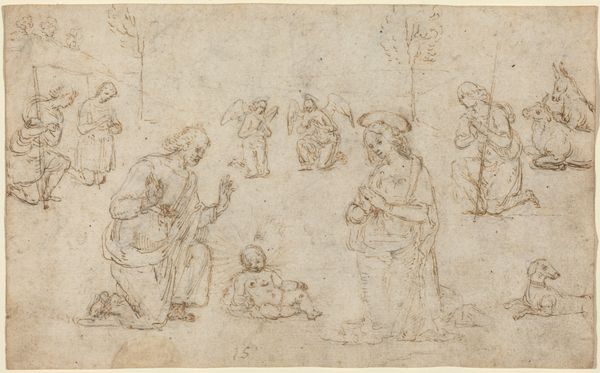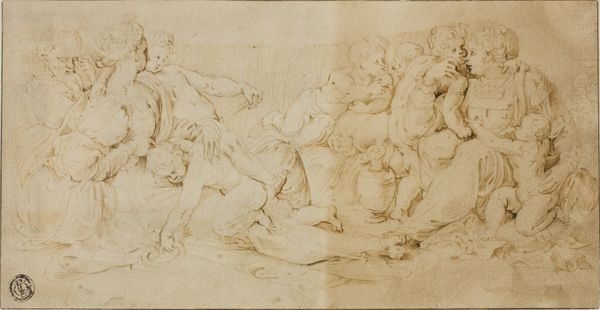
drawing, pencil
#
drawing
#
narrative-art
#
baroque
#
figuration
#
pencil
#
genre-painting
Dimensions: 7 7/8 x 10 5/16 in. (20 x 26.2 cm)
Copyright: Public Domain
Curator: Here we have "The Procuress," a drawing created around 1620 by Georges Lallemand, currently residing at the Metropolitan Museum of Art. Editor: It strikes me immediately as raw and visceral. The quick pencil strokes capture a tension, almost like a snapshot of a transaction in motion. Curator: Absolutely. Lallemand captures a common trope found in art and literature: the exchange of money for intimacy, specifically within the context of gender dynamics. Editor: The way the artist renders the textures—the elaborate fabrics and feathered hats, juxtaposed with exposed skin—tells a story about social class, labor and display. This sketch shows the economy of desire; the tangible, material side of something so often romanticized. What are the economic implications of this scenario? What sort of lives did these women live? What can it tell us about access to resources and production for 17th century women? Curator: I'd push that further by thinking about the cultural narratives it reinforces. Consider the male gaze dominant, perpetuating the image of women as commodities. What is at play here is not only gender roles, but the moral dimensions tied to female sexuality and agency, within a system that inherently disempowers women. How can we, as contemporary viewers, confront the work's potentially problematic undertones and reclaim a perspective of the historical agency of sex workers, and women generally, in the context of social hierarchies? Editor: A key takeaway for me is the function of drawing in the 17th century studio, particularly within the material conditions of production and workshops that produced luxury art for private patrons and export across Europe. Curator: Considering the historical setting of its creation is very important. Reflecting on the broader intersectional narratives embedded within "The Procuress", makes the image resonate with layered complexity and ongoing relevance for how we reflect upon power dynamics within visual culture. Editor: Yes, this forces us to analyze how economics were embodied, represented and exchanged. The sketch might seem small and insignificant but its power lies in laying bare that transfer of labor for profit and material survival.
Comments
No comments
Be the first to comment and join the conversation on the ultimate creative platform.


